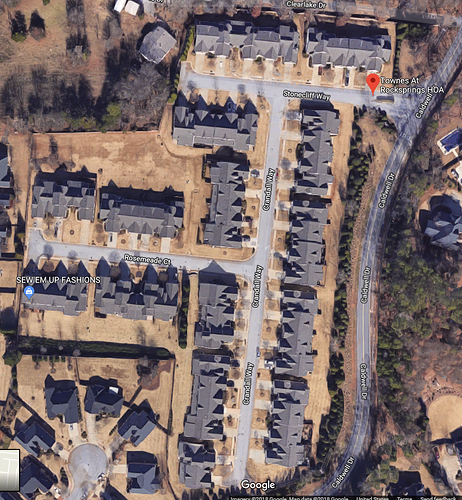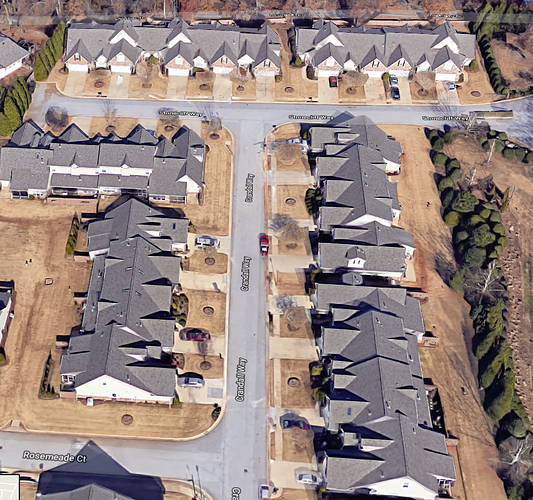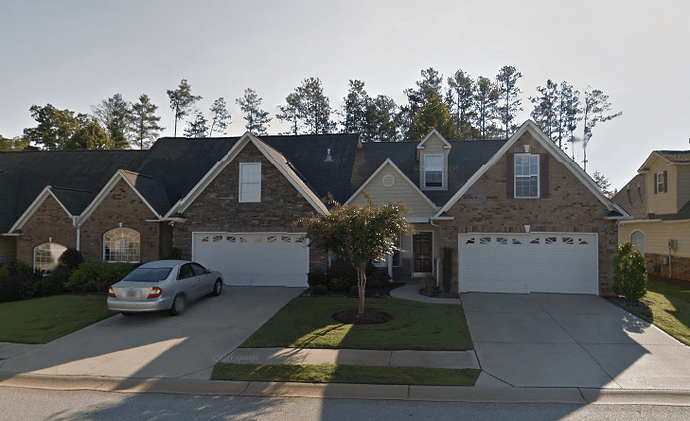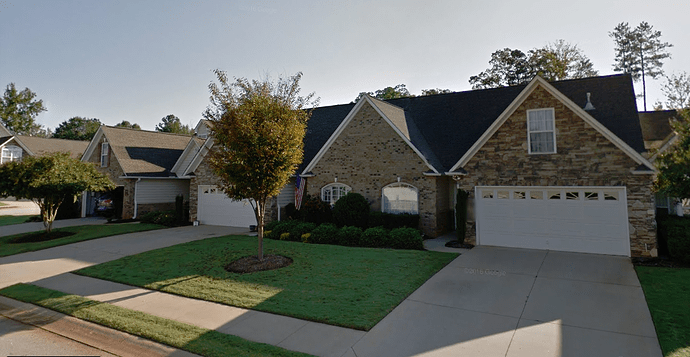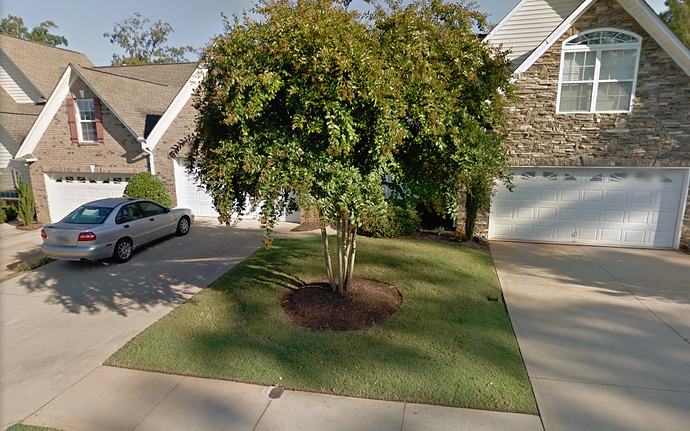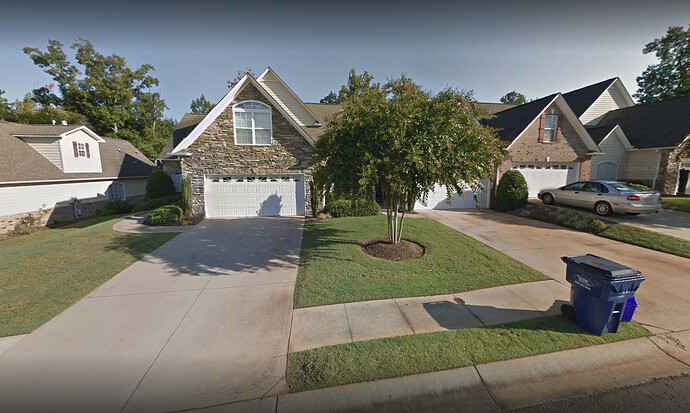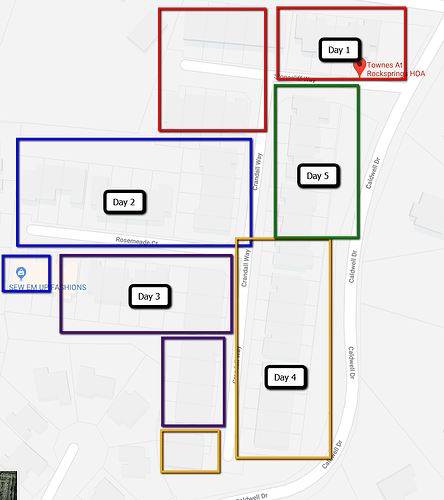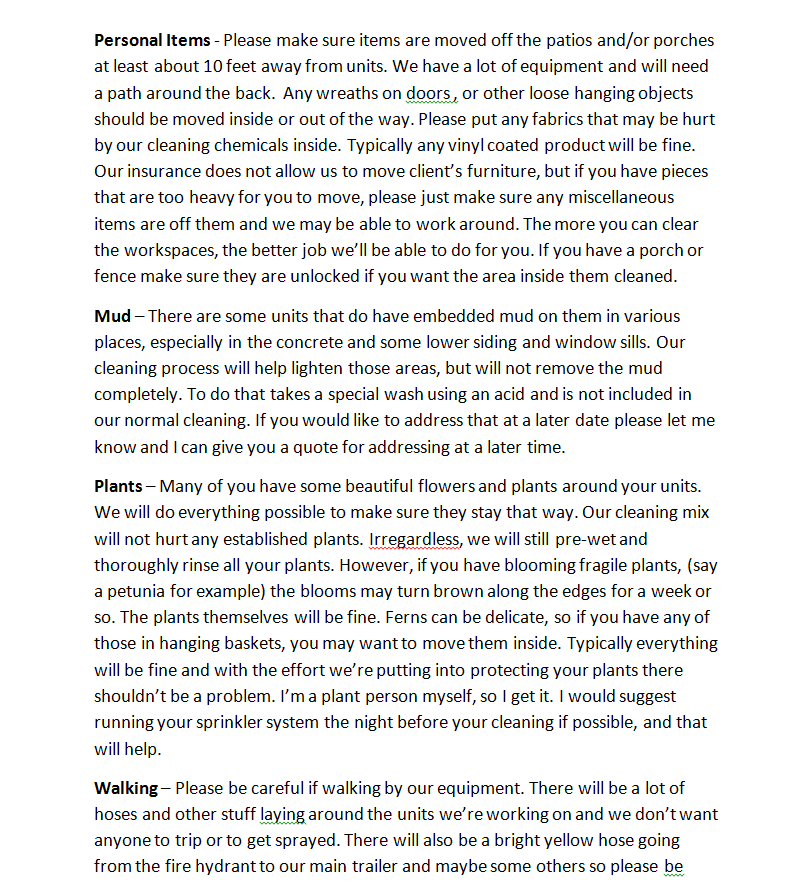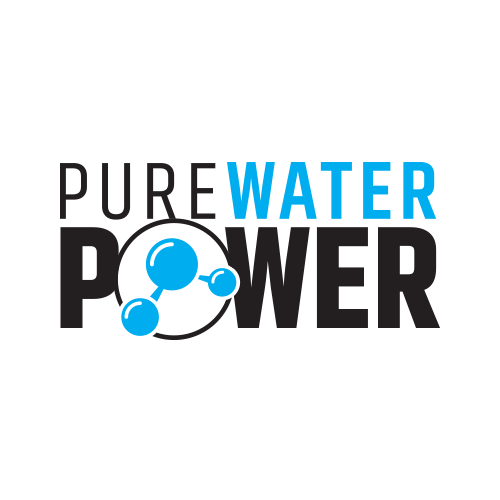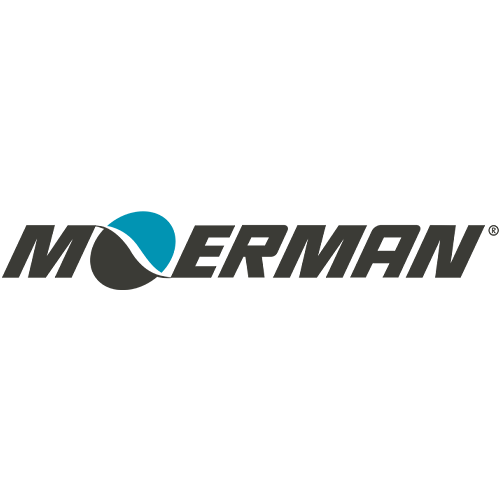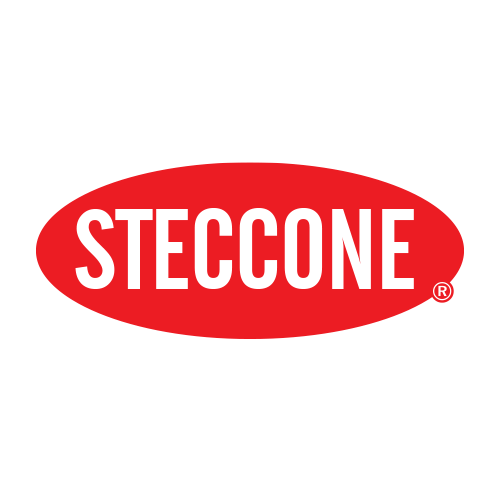Guys and Gals, this is going to be a long post, probably my longest of the year. This is taking you nuts and bolts thru a decent sized project and things that were done to facilitate it and more importantly ‘Wow’ the client. I’m disclosing pretty much everything including the name and location. I’m not the least bit worried about someone trying to take this project at any price. My price was higher than anyone else’s. This project will probably be mine as long as I’m in the business.
Background - I was contacted by the one of the HOA board members on June 27. He told me he had 56 homes that needed cleaning and they weren’t happy with the last company that had done it. It’s located in Spartanburg county in an upscale area and is about a 25-30 min drive. So it was a couple of days before I could meet with him and the president of the board. They were having their board meeting in about 4-5 days to decide. I spent about 30 minutes with them looking at a few of the units, explaining our process, plant protection and talking with them on pricing for certain items in general terms. Because of the time factor, I got them a bid sent out that nite at pretty much what I’d discussed with them, figuring I had 50% chance of getting.
About 10 days go by and they call and say I’d gotten the bid, when can I start. I’d already told them I was swamped so we set a start time for Monday July 30th. I’m like ’ oh crap must have underbid it’ lol. But when I asked them why they decided on us, their answer was, "Well you were slightly higher, but explaining how and why you tape up the outlets and other electrical was the deciding factor. We’ve never heard that before, but makes complete sense. No one else has ever done that".
Guys my total cost for doing that was 7 hours at $12/hr for the kid I had doing (took him about 30 min per building) and 2 rolls of tape. So for about $100 in costs it helped win a multi - thousand dollar project over several other companies. That and discussing how I was going to minimize damage to people’s flowers. Both the board members I met with turned out to have a lot of flowers. You never know what might resonate with the buyer.
The Project - The Townes at Rock Springs is a gated community that is part of a larger development. They’re called townhouses, but they’re really not in the traditional sense. Think more luxury, joined together, duplexes. The average square footage is about 2400 with most being one story or story and a half. All units have a 2 car garage and either 2 10x10 patios or a patio and a screen porch. About 85% had a screen porch. A few have fences. There are 56 units spread between 13 buildings. Most the building were 3 or 4 units but there was a couple of 5’s and one 2. They are about 15 years old, but because of an active HOA, units are for the most part are in excellent condition. Landscaping and outside maintenance is provided as part of their monthly fee. I would say the average age is around 55 for most the residents. So the place is kept up very well.
The owners, and a lot of them do, can plant seasonal or other flowers as they see fit. Some had small gardens. There were a lot of flowers to work around. They also use the bark mulch throughout the development and plenty of it. So I already knew from visiting project that it would be a pita when washing and doing the concrete, especially individual walkways from the drive to the front doors. The units were also built on slabs, so over the years, the ground has built up, they’ve planted sod, etc and the site is fairly level for the most part. So when it rains a lot some of the patios and porches get flooded, sometimes during a deluge as much as 1-2 inches deep. It’s really hard to clean concrete when the water is over an inch deep and running into the area. And when it wasn’t raining you can imagine the accumulated mud and dirt in some cases. Fortunately only about 20% had a bad problem. But all things to notice when you’re walking around. Those patios on average took us twice as long to clean. There are some fairly high gables and dormers and some weird angles. Every front entry was covered and some were recessed 10 feet or so. Between all of those and the screen porches I pretty much stayed wet all day. Fortunately 95% of the units had storm doors, so we didn’t have to tape up too many door seals.
The Contract - The contract called for cleaning basically everything outside. It included the units themselves, rear patios and porches, front walks to drives, the driveways, public sidewalks (which were just on one side or the other - so about 1300 ft by 4’ wide) and the curbing of which there was approximately 2800 ft by 24" wide. It was the drive over curbing so I knew I could use a surface cleaner on.
Preliminary Items- When doing even a fairly small project such as this, there is some planning involved. First was to look at water source. With multiple owners definitely didn’t want to be using homeowners water. They only have one fire hydrant for the whole neighborhood but it is centrally located so by utilizing 400’ of 3/4" hose was able to use it. Spartanburg water department does not just lease you a meter. They require that they come and set and remove for which they charge you $80. But they did offer a 3/4" meter with backflow preventer, that after talking to the engineers there to get the flow on that particular hydrant, was able to determine that it would flow about 20 gpm, which would be sufficient for 3 machines.
Planning the work flow. Wanted to minimize disruption to community as well as be efficient with how we mowed our equipment around. After looking at and actually going back to site and doing a more extensive walk around I determined we would just start at entrance and go building by building. That way we were always curbside which would help prevent hoses getting run over so much. Because I planned on running 3 machines, hose management was a big issue, partly because of the distances around some of the buildings. We typically ran 250 - 300’ of hoses the entire time we were there on each machine. I allowed 5 days for the job, figuring about 13 units per day or about 2.5 hours per building and we’d finish up by lunch Friday.
Porta Potty - guys get one. They’re dirt cheap to rent.
Staffing - I was definitely there with my 8.5, my helper, who has been with me most the summer and has gotten pretty darn good with a surface cleaner would be using my 4gpm machine to do the curbs and rear patios/porches. I have a friend in Charlotte that has a small company that often comes and helps me on roofs that had a 5.5 gpm. And then I had my college kid bring a friend for the week that would do taping, help with hoses, etc. I also had another friend here in town that has a 8 gpm that does a lot of commercial concrete, so a lot of his work is at night, on standby in case I got in trouble time wise, on the project. I didn’t want too many people because it just becomes more of a management problem with equipment and personnel and keeping good quality control.
Equipment and chemicals - I had pretty much everything that would be needed. Checked to make sure I had plenty of spare fittings, orings, etc. I did end up ordering another 24" surface cleaner so I would have another spare if needed and I ordered another 300’ of pressure hose. I had 450’ but wanted some more in case I needed, which it ended up I did. Fortunately Envirospec had 100’ sections of 4000 psi one wire gray non-marking on sale with the fittings on both ends for like $129@. Chemicals I ordered in an extra 3 drums of SH for the week and an extra fiver of Elemonator and a Green Wash knockoff that I’d just gotten, that I wanted to utilize. Because most the units did not have a lot of mildew and the extensive flowers, I planned on using fairly mild mix. I typically ran about 8 gal of SH, my surfactant and then the rest water in my 15 gal tanks. A few units I had to hit some of the areas twice, but not many.
I had everything delivered and meter set the week before project started so the Friday before I did an inspection, tested meter flow. etc. I didn’t want any surprises. As most of you know surprises on jobs are generally not the good ones.
Homeowner Notifications - About 2 weeks before the project I had the management company send out the below map. Despite some obstacles we were able to stay pretty much on schedule. The ones where there are 1/2 of a building marked is where we did the front or the back, but then did the other side the following day first thing. This let the homeowners know which day they needed to have their cars and stuff out of the way.
About a week before the project I had the management company email out the following letter. Now I’ve sent out stuff to the board or had the management company notify the tenants before but it has always been something impersonal and generic. This time, because of the average age and the community involvement, I wanted to try something different. I wanted to try to build a rapport with the homeowners, let them know what I needed from them as well as what we were going to do to help them so that we could co-exist for a week. What they could expect from us and what I expected from them.
People - this was the single best thing I did on this project. I can’t upload the document but I screen saved each page to a large image, so hopefully you can read. This was a 3 page letter to the homeowners themselves. I think at least 98% of them read the entire thing.
Execution of Project - The project went about as expected. Some long days, the only day we got out of there before 7pm was the last day at 2 pm. My goal was to have everyone on site no later than 8:30 and be spraying by 9am. That way most the residents that worked would be gone by then. My plan to work to right, curbside, as we went around worked well. Only a couple of times, and that was when we were in a cul-de-sac did we have any pressure hoses running across road. During the entire week I only had my pw hose get run over 3 times, and 2 of those were by a HO pulling in or out of their drive. The 3 rd time was company visiting a homeowner who didn’t know. So I was extremely happy about that. Often had homeowners stopping and asking if it was ok to drive over the yellow Flexilla, so they were very aware of the hoses.
Tried to keep even that to a minimum by running down the grass strip between sidewalk and curb, plus kept out of our way too since we were cleaning both.
Weather - it was our typical summer day the first day, hot and humid. The rest of the week we got rained on at least twice per day but we kept working unless a deluge, of which we had several or lightening. Would say we probably only lost about 3 - 4 hours the entire week. I had told everyone to bring rain gear and we used it. It did help keep the temps down and the other benefit was we had to do a lot less pre-rinsing of plants. But ground was saturated and often mushy. It also kept the concrete moist for a lot of the time so that helped it clean up easier. But as mentioned before, drainage problems were definitely a problem on some of the patios and porches.
The plan of attack was to let my guy start on the curbs for the area we were in with the 4gpm pushing my 20" ww classic. Of course curbs being 24’ wide, he would go out next to asphalt and come back next to grass, so the dirtier center section got clean twice. I parked my trailer usually between the buildings so he could go about 200 ft and then come back I gave him 30 min to do curbs. Then he was to move around back and do patios and porches. Actually having the lower flow helped, especially on the porches. I gave him a schedule of 10 min per patio and with the exception of when we had flooding he was able to keep to that pretty well.
The guy from Charlotte and myself would start in the back, him soaping and me rinsing. If he got too far ahead, then he would drop back and rinse some. That worked pretty well. the porches took longer than I had anticipated do to working around ceiling fans, cleaning the screens but also having to chase water out only one door. The other reason we started around back is that way we pre-soap the concrete and were pretty much done or at least out of the way enough so my concrete guy could start on patios.
We also tried on the second building with one of us going right and one going left - pre watering plants as we went around building and then meeting in the rear middle to start washing and rinsing individually. That worked ok but was a little slower, but did help some on the hose management. One thing to remember when you have several people with long lengths of hose working around one building is to set up a rule for who always goes on top or bottom. After the first day we had that down pretty good. After we finished the rears then we would come to the front, pre wet plants , do the fronts and then jump on drives and sidewalks.
The main problem was my guy from Charlotte kept having equipment problems. Blown hoses, and then because he didn’t have QCD on his machine, took him hours to get hose loose. And some other problems. He ended up only working about 3.5 days. Also, didn’t take us long to figure out that even running off the hydrant meter, running hose through my reel with a 1/2" manifold wouldn’t keep up with 3 machines so we just bypassed reel and had more water than what we could use.
The net result was that I ended up taking our helper after he’d taped to follow me with hoses and I’d soap 2 units and then rinse working my way around the building. That worked well so my Charlotte guy I would just get to start on the front drives and walks. I probably ended up washing and rinsing 70% of the units and probably 20% of the drives and at least 1/2 the sidewalks.
Once we completed a building at least 3 of us would walk around together with rags and a pump up of Dragon Juice, to have different eyes, to do a final inspection. That normally took us about 20-30 minutes per building and removed tape as we went… The homeowners saw this and I think were thoroughly impressed at our attention to detail. Then we’d pull forward to the next building, which took awhile because of hoses, water feed, etc.
Overall things went well. The deluges hurt us some, but having cloudy skies most of the week and lower temps definitely helped. Time wise we finished about 2 hours slower for the whole project than I had planned, so not bad considering we were a man and machine down and not there for a day and 1/2. We only post treated about 10 of the drives.
Hard costs - Total time at job site was 52 hours. Total man hours including myself were 191 hours. That includes 3-4 hours of rain delays. Tear down and setup ran about 20-30 min each, about what I’d expected. Total payroll not including me was $2700.
SH - we used $550 worth.
Surfactants ran $300
Fuel for equipment and trucks ran about $300
Extra hoses and surface cleaner(which we ended up not needing) $1100
Porta Potty - $89 - would have been the same if I’d kept for a month
Water - lease on meter, installation and right at 16,500 gals of water - $210
Rags - $15
So total hard disposable costs were $4164 plus the aforementioned capital purchases. Costs worked out to about $75 per unit not counting my time.
Results and Misc Notes - The homeowners were extremely happy. Probably had 25% of them raving about how much better we did than anyone else they’ve ever had. I loaded up a medium sized cooler with drinks and water the first day. We never had to restock it the entire week. The homeowners, would be 2 -3 people per day, kept the guys stocked up with water. Some would bring it out to us and others actually rolled out small coolers.
I think the expectations that were addressed in the letter worked for all the parties involved and the homeowners were a pleasure to work with. And I think they felt the same about us. When I went by the management company to pick up check last week, they told me the board had great feedback about us. The management company was very happy because they hadn’t had any complaints. Just a note, they manage 156 homeowner associations. I was passing out cards like candy at Halloween. I asked them if they had read the letter. They obviously had and felt like I did, that it had really helped.
The homeowners were great about our equipment and hoses, and did a great job of keeping their cars out of the way. We had to wait one time for less than 3 minutes the whole project. And they took heed, never had to rinse off a single car. The homeowners were also great about moving their stuff out of the way. Had just a couple in the whole project that we had to wait on just a little bit and really didn’t slow us down since we worked around them for a few minutes. Had about 7 patios/porches out of 112 that we ended up not doing.
Not one single complaint about any bleach smell. Only had a few comments and they were positive and how clean everything smelled.
Total boos-boos - Had to replace one floodlight that had obviously been on all nite and when I hit it with some water while pre-rinsing one morning, it exploded it was so hot, and had to run one bead of caulking that had come loose. Not sure we even did it, but we took care of it.
Elemonater - As many of you know a lot of us use. We ran into a fair amount of dirt daubers which are kind of rare around here. It absolutely annihilated them. Best I’ve ever seen anything do. On dried bird poop on the siding, the green wash was much better and on the spider webs a little better. But overall it did a great job.
The 30 ft pole @squidskc talked me in to buying came in really handy for knocking down wasp nests. Because most were in corners with the mesh soffit, couldn’t use pressure, so after I ran them off with mix, helper kid got pretty good at getting down with just the end of the pole.
Lot of bird nests in the top of columns we had to remove. Better to stand on something and get them out dry before you wet them or you’ll have mud leakers later in the day. I fortunately already knew this so wasn’t a huge problem other than to spot them.
The little 4 gpm 4000 psi machine has always impressed me for being a great little workhorse and continued to do so. It did as much work, shot further, and did as fast a job on the concrete as the guy from Charlotte’s 5.5. Some of that may have been operator experience on the concrete. It was great to have in some of the tight areas or where we didn’t need a lot of flow.
However- having said that about the smaller machine, if you’re even thinking about doing a project like this, you really need 8 gpm or more. Anything else is just a toy almost when it comes to work output. It just does everything so much faster and often better. I don’t even want to think about how long it would have taken to do a project like this w/o. At least twice as long.
Having a well trained team such as @Innocentbystander for big multi-family projects I can see where it’s a big advantage. Two of my 3 helpers have a good bit of experience, one actually quite a bit, but it actually took about a day and 1/2 before everyone really got in sync.
Doing the multi-person walk around at the end of each building before we moved our equipment was another really good move. Even the ones I was on, sometimes one of the other guys would spot something I didn’t. It was also a good training exercise because, especially on the first couple of buildings, they learned real quick what my level of expectations was. As the guy from Charlotte said, there’s everyone else’s clean and then there’s the Pro Clean clean. It also gave the guys a little break after a few hours of busting ■■■ as well as I think it was a PR home run since many of the people saw us doing. Plus we did catch a lot of little things and addressed them. Think people felt like they didn’t have to check behind us.
Takeaways - Things I would do different - Very little actually. I would upcharge a little more for the screened in porches, they literally take twice if not more longer than the patios.
I’ll never show up for another project like this w/o at least 2 - 8+gpm machines.
I still hate bark mulch, especially if you have built up beds next to where you’re cleaning. We tried blowing, pre-rinsing it out of the way and anything else you could think of. We finally just went with it and took care of on final rinse
Anyway, hope some of you can learn something from this. Don’t be afraid to charge what it’s worth. It’s a lot of work.
